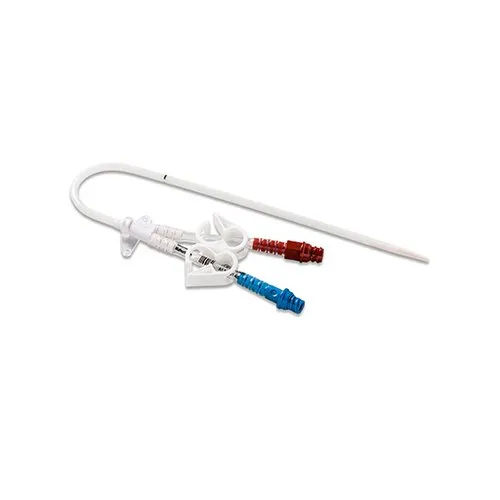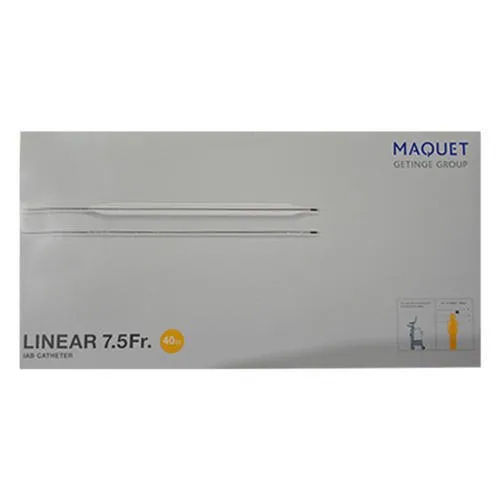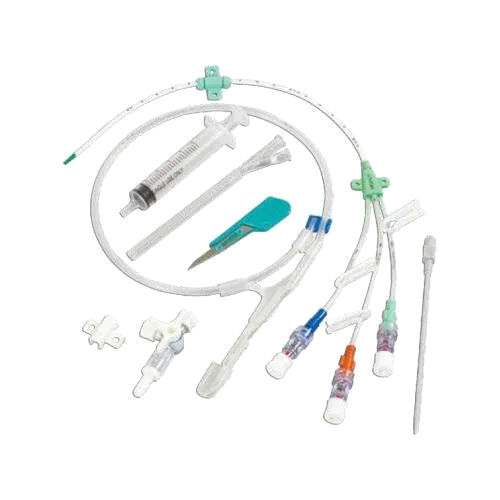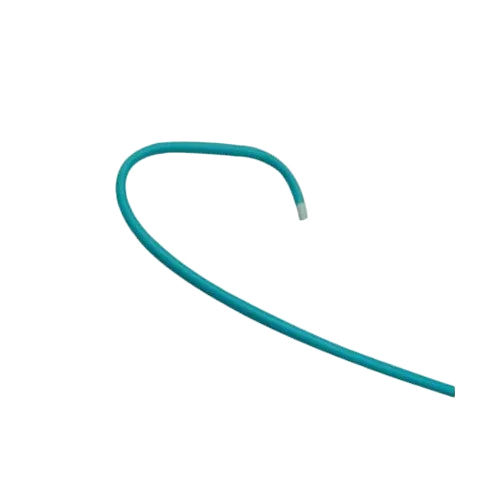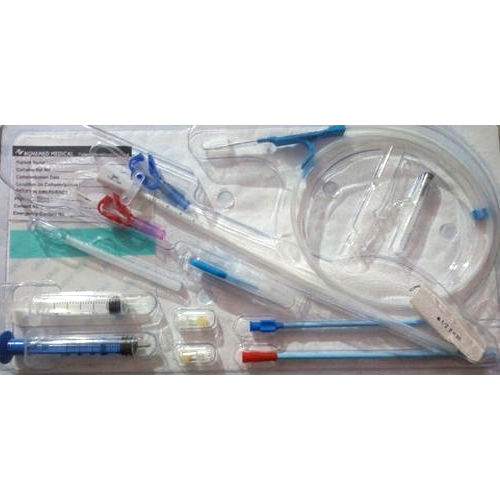Dialysis Catheter Kit
Product Details:
- Equipment Type Dialysis Catheter Kit
- Material Other
- Use Hospital
- Power Source Electric
- Color White
- Click to View more
Dialysis Catheter Kit Price And Quantity
- 900 INR/Piece
- 50 Piece
Dialysis Catheter Kit Product Specifications
- Other
- White
- Dialysis Catheter Kit
- Hospital
- Electric
Dialysis Catheter Kit Trade Information
- 10000 Piece Per Week
- 4 Days
Product Description
100 cm Dialysis Catheter Kit is well known for its super insertion method for its soft and flexible tip design. Its radio opaque marker based design is useful for clear visualization during fluoroscopy and x ray procedures. Tapered dual lumen based design of this catheter promotes smooth flow of blood. Its cuff free design ensures comfort of patient. Y adapter based design of 100 cm Dialysis Catheter Kit ensures to establish secure connection to hemodialysis system. Its antimicrobial coating is meant for preventing contamination. Color coded appearance of this catheter is meant for its easy identification purpose.
Product details
|
Guide Wire Length |
100 cm |
|
Shape |
2 Way |
|
Size |
Extra-Large,Medium,Large,Small |
|
Packaging Type |
Packet |
|
Usage/Application |
Hospital |
|
Is It Sterilized |
Sterilized |
|
Material |
Rubber,Plastic |
Frequently Asked Questions
Q: A 100 cm dialysis catheter kit: what is it?
A: In the realm of nephrology, a temporary hemodialysis access is provided via a 100 cm dialysis catheter kit. It includes a catheter, a guidewire, dilators, a syringe, and other elements required for the catheter's insertion and placement into a patient's blood vessels.
Q: A dialysis catheter's function is unknown?
A: In patients with acute kidney injury or those who require emergency dialysis therapy, a dialysis catheter is used to temporarily provide access for hemodialysis. It enables the taking and giving of blood during the dialysis procedure.
Q: What length catheter is included in a package for a 100 cm dialysis catheter?
A: A 100 cm dialysis catheter kit normally includes a 100 cm long catheter. This distance is intended to allow the catheter tip to be inserted into a major vein, like the vena cava, while still allowing the catheter's other end to exit the body and connect to the dialysis machine.
Q: Do various 100 cm dialysis catheter kits exist?
A: The layout and individual parts of dialysis catheter kits can vary. Depending on the manufacturer and the particular requirements of the healthcare facility, certain kits may have extra features like antimicrobial coatings or guidewires that are already loaded.
Q: A 100-centimetre dialysis catheter: how is it inserted?
A: A trained medical expert, such as an interventional radiologist or nephrologist, usually inserts a 100 cm dialysis catheter. Local anaesthesia is typically used during the procedure, which is performed in sterile surroundings. With the aid of a guidewire and dilators, the catheter is placed into a suitable vein, typically in the neck or groyne area. Once positioned, the catheter is fastened and attached to the dialysis machine for use.ï

